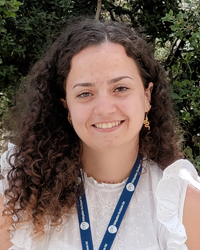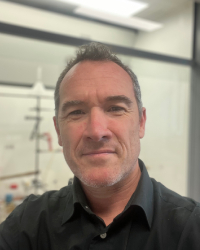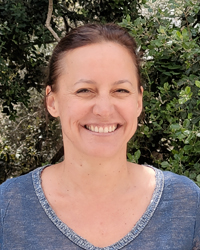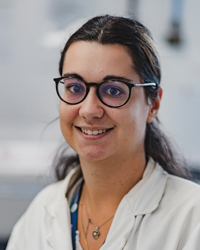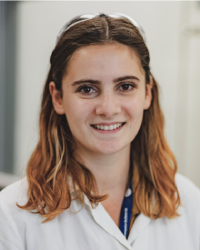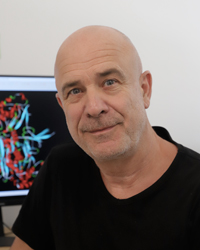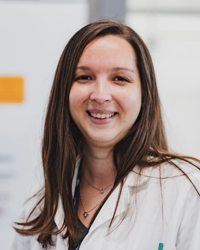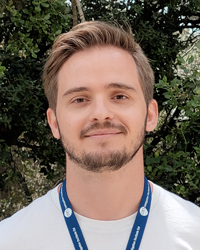The Amino Acids, Heterocycles, Peptides and Proteins team (24 permanent staff members) led by Dr. Muriel Amblard (Director of Research CNRS) is part of the interdisciplinary department “Amino Acids, Peptides and Proteins” at the Institute of Biomolecules Max Mousseron.
Our team designs bioactive compounds and chemical tools to explore different areas of health sciences at the frontier of chemistry and biology. We focus our researches on three major areas, for which fundamental and applied researches are crucially related: i) Chemistry and biological activity of peptide and heterocyclic derivatives; ii) Structured oligomers for biological applications and catalysis; and iii) Peptide-based polymers and materials.
The Amino Acids, Heterocycles, Peptides and Proteins team is renowned for its strong and recognized expertise in Peptide Science.

Our Themes
Folded oligomers for biomedical applications and catalysis
Our group synthesizes stapled peptides and pseudopeptide oligomers constructed from constrained β- and γ-amino acids or dipeptide mimetics able to adopt stable and predictable helical and ribbon conformations. Due to their well-defined secondary structure and their resistance to enzyme degradation, stapled peptides and foldamers are used for various biological applications, in particular for the development of efficient vectors for drug delivery, antimicrobials, inhibitors of protein-protein interactions and the targeting of the mannose 6-phosphate receptor for non-invasive cancer therapy. Bio-inspired foldamer catalysts built on heterocyclic γ-peptide scaffolds are also currently developed.
We synthesize and characterize various homo- and hetero-oligomers using the ABOC, ATC residues which are constrained β- and γ-building blocks respectively, and Agl-AA dipeptide mimics. Depending on the sequence, we obtained different architectures, from various helices to ribbons. Numerous techniques, i.e. CD, FTIR and NMR spectroscopies, X-ray diffraction and DFT calculations are combined to characterize the three dimensional structure of the various oligomers.
Interaction with proteins: Stapled peptides and foldamers are currently evaluated for their ability to regulate physiological processes inhibiting protein-protein interactions, proteins aggregation in various pathological context such as cancers or Alzheimer disease as example. We also developed original glycofoldamers targeting the mannose 6-phosphate receptor overexpressed in prostate cancer cell lines and tissues.
Development of antimicrobial foldamers: A bioactive analogue of gramicidin S was successfully designed using an ATC building block as a turn inducer. The NMR solution structure of the analogue adopted an antiparallel β-pleated sheet conformation similar to that of the natural compound. The hybrid α,γ-cyclopeptide exhibited significant reduced hemotoxicity compared to gramicidin S, while maintaining strong antibacterial activity. New highly selective sequences exhibiting strong antimicrobial activities are currently developed.
Contacts
Muriel Amblard, Baptiste Legrand, Ludovic Maillard, Lubomir Vezenkov, Luc Brunel, Jean Martinez
Enzyme inhibitors
Several projects in medicinal chemistry deal with enzyme inhibition. Enzymes play central roles in all life processes and in some circumstances, their inhibition can help resolve pathological situations. In most diseases, if not all, it is possible to propose at least one enzyme as a potential target, and many drugs are enzyme inhibitors. Enzymes could be human enzymes that can be inhibited to treat various diseases as cardio-vascular, inflammatory, cancer and neurological diseases. Enzymes can also be exogenous ones that are essential for the life of deadly virus, bacteria or parasites.
We have a long time experience in the design of enzyme inhibitors and we are currently investigating the following medicinal targets:
– NO Synthases
– Metallo-β-lactamases (MBL) and the bacterial resistance to β-lactam antibiotics
– SUB-1, a peptidase essential for the life cycle of Plasmodium falciparum, the agent of Malaria
– Kallikrein inhibitors
– New antimelanoma agents
Contacts
Jean-François Hernandez, Laurent Gavara, Nicolas Masurier, Ludovic Maillard, Vincent Lisowski, Cyril Fersing
Heterocycles for therapeutic applications
Heterocycles are common structural units in marketed drugs and in medicinal chemistry due to the central role they play in modern drug design. Indeed, heterocycles are useful scaffolds that can be decorated with various substituents in order to modulate lipophilicity, polarity, and hydrogen bonding capacity of molecules. These structural modulations may lead to improved pharmacological, pharmacokinetic, toxicological, and physicochemical properties of drug candidates. Heterocycles are also routinely used as bioisosteres for a variety of functional groups in drug candidates. Therefore, heterocycles represent privileged structures in the drug discovery process.
In order to find new potential lead compounds for therapeutic applications, we develop methodologies to access and structurally modulate heterocycle scaffolds such as [1,2,4]triazoles, diazepines, thiazoles and triazolo-ketopiperazines.
Contacts:
Nicolas Masurier, Séverine Denoyelle, Ludovic Maillard, Jean-Alain Fehrentz, Laurent Gavara, Cyril Fersing
Peptide-based polymers & materials
With their outstanding range of structures, structural and biological activities, peptides are highly attractive molecules to give a tailored function to an existing material but also to design innovative materials with unprecedented properties. We envision innovative bottom-up approaches based on peptide building-blocks bearing functions for polymerization or condensation. We investigate organic polymerization using peptides bearing N-carboxyanhydride (NCA) moieties or lactame rings but also inorganic polymerization methods, using sol-gel process relying on hydroxysilane-derivatized peptides.
Other types of active molecules, including biopolymers, drugs, probes etc., can be combined using the same strategies, yielding unprecedented materials.
Applications currently investigated through founded programs and collaborations:
- The functionalization of medical devices and dressing with wound-healing and/or antibacterial peptides and the design of smart ‘communicant’ dressings using RFID technology.
- The synthesis of multi-ligands nanoparticles for cancer treatment and imaging.
- The synthesis of polymers for cell targeting, vectorization and drug-delivery.
- The design of biomimetic hydrogels for cell-based therapies that can be printed as 3D scaffolds.
From a fundamental point of view, the self-assembly of hybrid peptides is also studied for the design of new nanostructured materials.
Contacts
Gilles Subra, Cécile Echalier, Muriel Amblard, Lubomir Vezenkov, Anthony Martin, Pascal Dumy, Pascal Verdié, Jean Martinez
Vectorization & targeting
A lot of potential drugs are ineffective because of their inability to cross certain biological membranes, such as the lipid bilayer or the blood brain barrier. Once inside the cell, those compounds often have to find a local address, also known as cell compartment, but unfortunately often they will lose their way and find themselves trapped in the ‘’wrong neighborhoods’’ (cell organelles). In the same time most of the anti-cancer drugs have devastating side effects due to the fact that they target equally healthy and tumor cell. For all those reasons the terms ‘’Vectorization, targeting and drug delivery’’ are key words in modern medicinal chemistry. In our group we actively pursue the development of cell penetrating and cell targeting compounds based on peptides, foldamers and anti-bodies. These vectors are used to send bioactive compounds, such as anti-cancer drugs, to a preferred cellular compartment or to target a certain organ or cell type in the living species.
Contacts
Muriel Amblard, Anthony Martin, Ludovic Maillard, Lubomir Vezenkov, Baptiste Legrand, Vincent Lisowski, Cyril Fersing, Luc Brunel, Jean Martinez
Design of GPCR ligands
Our research focuses on the conception, design and synthesis of ligands that target G protein-coupled receptors of specific peptide hormones such as ghrelin, gastrin, tuftsin, cholecystokinin, bradykinin, bombesin, neurotensin… We aim at finding highly specific molecules that target physiological/biological activity of a given receptor and pave the way for pre-clinical studies.
The development of such compounds gathers expertise and techniques in peptide, pseudo-peptide or non-peptide chemistry, which allow the modulation of the agonist, antagonist or inverse agonist properties of the ligands toward the targeted receptor. Significant work in the field has led to the identification of the recently marketed compound JMV1843 (Macrilen™) as a drug for the diagnosis of growth hormone deficiency in adults.
We also synthesize chemical tools designed to address specific biological issues such as the purification of receptors, radiopharmaceutical and fluorescent ligands for imaging, or labeled 15N peptides for NMR interactions studies.
Following ligand directed targeted strategies we also develop selective probes (as photoactivatable or chemically reactive probes) to address out of range receptors of interest in complex biological media, relying on specific Fluorescence or Mass Spectrometry assisted tag detection (in vitro, ex-vivo or in-vivo imaging)
Contacts
Luc Brunel, Sonia Cantel, Séverine Denoyelle, Jean-Alain Fehrentz, Jean Martinez, Pascal Verdié
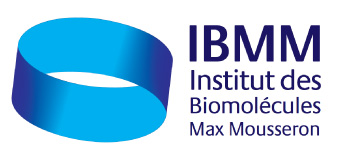
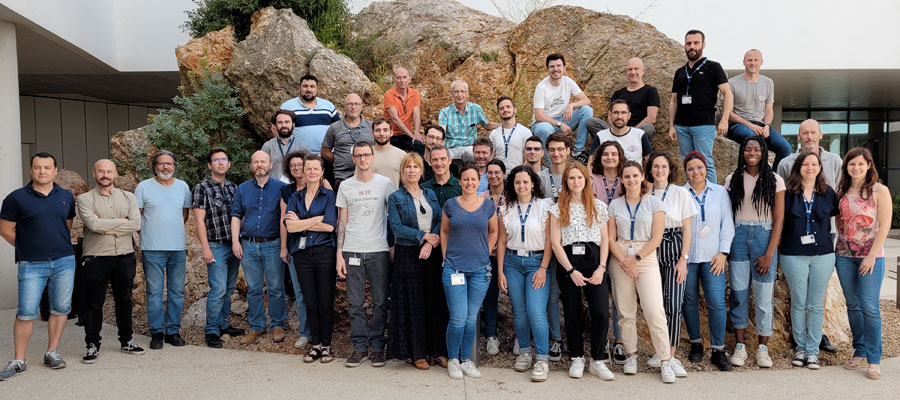
 Muriel Amblard
Muriel Amblard

